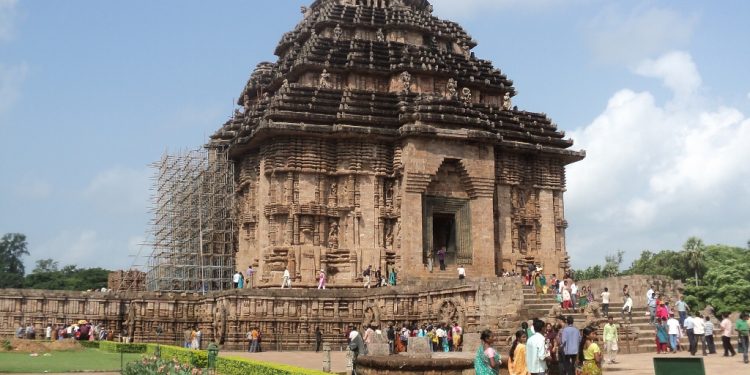India is a land full of temples that are entrenched in their own unique mysteries. In this article we are going to tell you about a supposed 52-ton magnet that was installed at the Konark Sun Temple in Odisha that could pull distant ships on the ocean towards its shores.
The Sun Temple in Konark is famous worldwide for its rich history and unique architecture. Besides that, it also has many facets to its existence which attracts tourists from all over the globe.
Few people get the privilege of seeing the Sun God installed in the sanctum of the Konark temple. This historic temple of India has been declared a World Heritage by UNESCO. It is said that there was a huge 52-ton magnet in this temple.
During the construction of the main tower of the temple, the artisans put an iron plate between every two stone pieces. There is a lodestone at the top of the temple which is believed to have been a massive 52 ton magnet.
According to legend, the statue of the Sun God inside the temple was built of a material with iron content and was said to be floating in air, without any physical support due to the unique arrangements of the top magnet, the bottom magnet and the reinforced magnets around the temple walls.
The placement of the main temple and the Sun God had been aligned in such a way that the first ray of the Sun from the coast would cross the Nata Mandir (Dancing Hall) and would fall & reflect from the diamond placed at the crown of the Sun God.
It is also said that magnetic effect of the lodestone was so strong that it caused disturbance in the ships compasses that passed by the coast (Konark being a major port at that time), thus making the navigation very difficult for sailors. To save their trade and their ships, Portuguese sailors destroyed the temple and took away the lodestone. The removal of the lodestone leads to the collapse of the main temple structure.
Konark Sun Temple is a 13th-century CE Sun temple at Konark about 35 kilometres (22 mi) northeast from Puri on the coastline of Odisha, India. The temple is attributed to king Narasimha deva I of the Eastern Ganga Dynasty about 1250 CE.







































